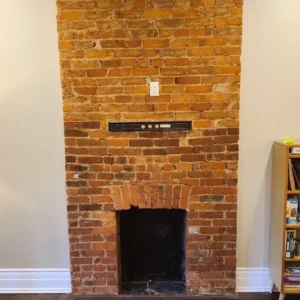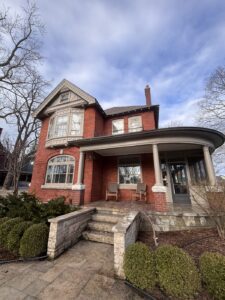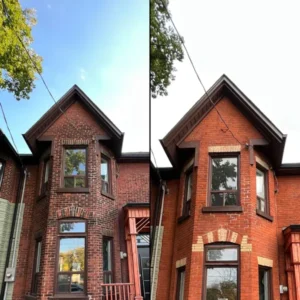Historic brickwork isn’t just part of your home’s foundation—it’s part of Toronto’s architectural legacy. At Brick Wash, we specialize in bringing that legacy to life by preserving and restoring historic masonry. While many century homes were built with longevity in mind, age, pollution, moisture, and improper maintenance can accelerate brick deterioration. The good news? With the right approach, you can significantly extend the lifespan of your brickwork.
What Determines the Lifespan of a Brick Wall?
Not all bricks are created equal. Several factors influence how well your masonry will hold up over the decades:
- Brick Composition:Historic bricks were often hand-made with varying clay content and fired at lower temperatures than modern bricks, making them more porous and sensitive to weather.
- Mortar Type:Lime-based mortar was traditionally used in older homes. It’s softer and allows for slight movements in the structure. Replacing it with modern Portland cement can trap moisture and cause damage.
- Environmental Exposure:Brick facades exposed to harsh weather, pollution, or southern sun tend to deteriorate faster than those in shaded, protected areas.
- Pollution Levels:Homes in urban areas, especially those affected by historical coal burning and modern traffic, suffer from hydrocarbon staining that shortens brick lifespan.
Common Enemies of Historic Masonry
- Water Intrusion:Moisture is the number one enemy of brick. Water entering through cracks or porous surfaces leads to freeze-thaw damage, spalling, and structural weakening.
- Hydrocarbon Buildup:A black, soot-like film from pollution and historical coal burning, hydrocarbon staining traps moisture and accelerates brick decay.
- Biological Growth:Moss, algae, and vines might look charming but hold moisture against brick surfaces, contributing to deterioration.
- Inappropriate Repairs:Using hard, modern materials like Portland cement or synthetic sealers can cause more harm than good.
Natural Wear vs. Damage: Knowing the Difference
Preserving a home’s historic charm doesn’t mean every imperfection must be erased. The key is knowing when to act:
- Patina vs. Erosion:A weathered appearance is natural; flaking or crumbling bricks are not.
- Hairline Cracks vs. Structural Movement:Minor surface cracks may be harmless, but bowing walls or wide cracks need immediate professional evaluation.
- Mortar Loss:Light surface erosion is expected over decades. Hollow joints or missing mortar, however, compromise structural integrity.
How to Extend the Life of Your Brickwork
At Brick Wash, our goal is to protect and preserve—not just clean. Here’s how we do it:
- Scheduled Cleanings:Periodic low-pressure steam cleaning removes harmful hydrocarbon buildup and pollutants without damaging the brick. Cleaning using low-pressure steam and detergent should be scheduled in accordance with the Canadian guide to restoring historic places to remove harmful hydrocarbon buildup and pollutants without damaging the brick. Brick Wash reps will never recommend restoring a house if it does not meet Canada’s guidelines.
- Proper Repointing:Using historically accurate lime-based mortar to replace deteriorated joints maintains breathability and prevents cracking.
- Water Management:Ensuring your gutters, downspouts, and grading direct water away from the building protects masonry from water intrusion.
- Avoiding Sealers:Most brick does not benefit from sealing unless it’s a specific conservation-grade breathable sealer recommended by a consultant.
The Role of Preventative Restoration
Waiting until damage is visible often means it’s already extensive. Proactive maintenance is the most cost-effective way to preserve your historic property.
- Early Intervention:Cleaning and repointing in the early stages of deterioration prevent costly structural repairs later.
- Value Preservation:Maintaining your brick not only protects your investment but increases your property’s curb appeal and market value.
- Heritage Respect:Preventative care ensures your home continues to reflect its historical authenticity for generations.
A Professional’s Approach to Longevity
Our team at Brick Wash doesn’t just clean brick—we assess it thoroughly. Our restoration process includes:
- On-site Assessments:We examine staining, mortar condition, biological growth, and any structural irregularities.
- Customized Restoration Plans:Based on age, location, and condition, we tailor each project to respect the original construction while ensuring durability.
- Adherence to Standards:We follow Canada’s conservation guidelines to ensure every project meets historic preservation best practices.
Conclusion: Let Your Brickwork Outlive You (In a Good Way)
Your home’s historic masonry is worth protecting. With the right restoration techniques, including proper cleaning, repointing, and moisture control, your brick can remain strong, beautiful, and historically accurate for decades to come.
Ready to give your bricks the care they deserve?
Contact Brick Wash todayto schedule a professional assessment and discover how we can help extend the life of your historic home’s exterior—brick by brick.



